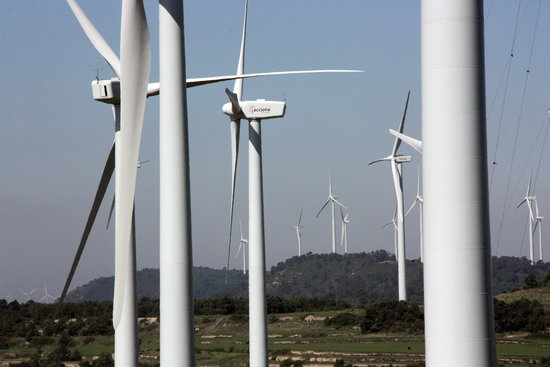'We're doing very badly': Catalonia struggles to generate renewable energy
Professor Sergi Saladié points finger at lack of initiative and interest from authorities and businesses

"We're doing very badly." That's the assessment of Sergi Saladié i Gil, a Geography professor at the University of Rovira i Virgili in Tarragona when Catalan News asked how Catalonia is doing in terms of renewable energy.
Catalonia is lagging behind the Spanish and European averages when it comes to generating renewable energy and desparately need to go green if targets are to be met. 50% of all energy consumed should come from renewable sources by 2030 - a figure that needs to increase to 100% by 2050 according to the 2017 Catalan climate change law.
But, according to Saladié, large projects are often located far away from places where they are needed and controlled by a small number of large companies.
Below is a translation of the interview with Sergi Saladié i Gil.
How is Catalonia doing in terms of generating renewable energy?
"It is not that we are the ones in last place in number of renewable devices installed, but since Catalonia is the territory [in Spain] with the highest electricity consumption, these quantities generated translate to a low share of that consumed.
We are doing very badly, but not that bad in comparison with other territories in Spain in terms of devices installed."
Why is Catalonia lagging behind in this regard?
"There are three factors: a lack of initiative and encouragement of renewable energy by Spain, lack of interest by the Catalan government, which has authority over infrastructure distribution and could establish tax benefits to encourage people to launch projects if businesses don't want to set them up, and finally, firms also have a responsibility, because even though some of their projects have been approved, they haven't wanted to launch them due to their own interests."
Why are local communities often against wind farms?
"What we are seeing is that a lot of very large projects have been presented, far from the main places where it is consumed, and with only a few companies behind them. The projects are not located in spaces already previously altered by human activity, like the 2017 Catalan climate change law outlines, but in agricultural and natural locations."
"As a result, the local communities are irritated. The debate is not whether we have to launch an energy transition, but how."
Do these actually benefit local communities?
"Between the 90s and 2013, [the first wave of renewable installations] was based on large wind farms, far from the consumption places and in a few companies' hands and on rural lands. And this model has brought hardly any benefit to local authorities. Back then, it was said that thanks to the large wind farms, these municipalities would be able to overcome all their problems, like depopulation, ageing, lack of economic diversification."
"[According to my research,] 80% of the municipalities with wind farms have lost population in the past ten years."
Podcast
Press play below to listen to the podcast on the debate around the Gulf of Roses wind farm.